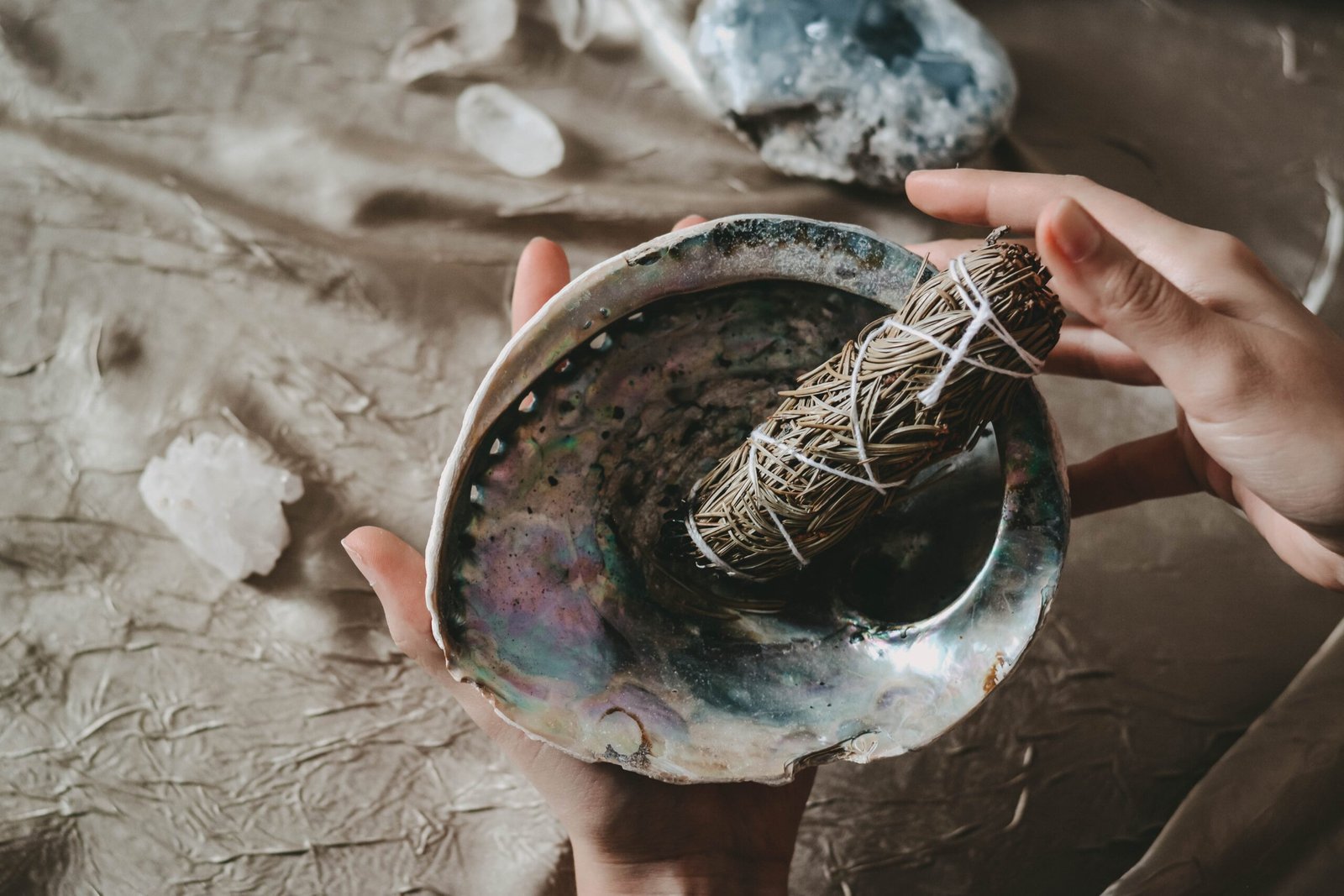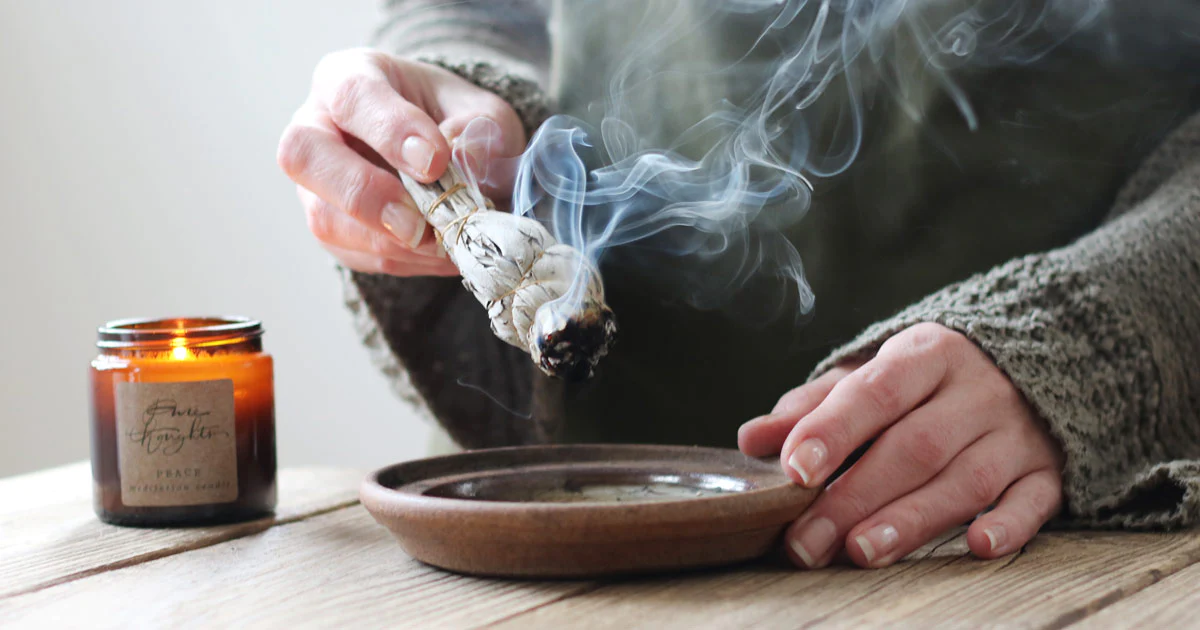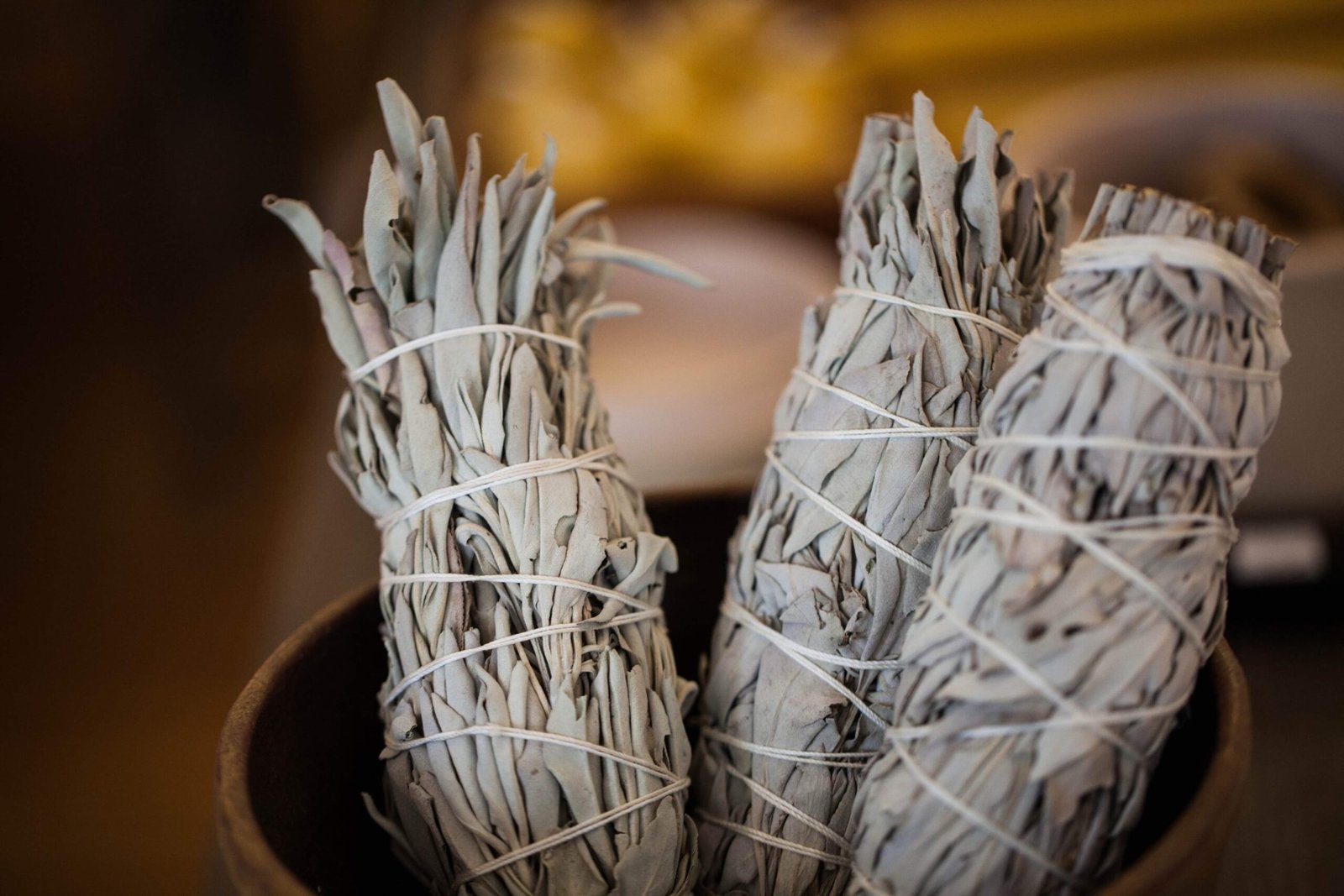Introduction
Smudging, an ancient practice rooted in Indigenous cultures, has transcended time. Today, many embrace it for its spiritual and therapeutic benefits. But what exactly is smudging? At its core, it’s a ritual that purifies spaces, objects, and even our own spirits. This article dives deep into the art of smudging, offering a step-by-step guide on how to smudge a house effectively. Whether you’re a seasoned practitioner or a curious newbie, this guide aims to enlighten and empower. Let’s embark on this transformative journey together, clearing negative energies and inviting positivity into our spaces.

Table of Contents
What is Smudging?
Smudging is an ancient ritualistic practice that originated primarily in Indigenous cultures, especially among Native American tribes, for the purpose of spiritual cleansing, healing, and protection. The practice involves burning specific herbs, such as sage, Palo Santo, or cedar, to produce a purifying smoke that is believed to cleanse a space, object, or person of negative energy. Often accompanied by chants, prayers, or specific intentions, smudging serves as a bridge between the physical and spiritual realms, allowing for the removal of stagnant energy and the invitation of positive vibrations. In modern times, smudging has transcended its traditional boundaries, finding applications in holistic health and well-being, and becoming a popular practice for spiritual and even mental cleansing.
Materials Needed for Smudging
Types of Smudge Sticks
Selecting a smudge stick can have a huge impact on the experience. The most popular herb to make smudge sticks remains sage, although other choices are also around. A number of them are as follows:
- White Sage: Known for its strong aromatic properties, white sage is the go-to herb for most smudging rituals. It’s excellent for deep cleansing and is believed to have powerful purifying energies.
- Palo Santo: Translated as “holy wood,” Palo Santo offers a sweeter, lighter scent compared to sage. People often use it for inviting positive energies and for spiritual healing.
- Cedar: This herb is often used for grounding and offers a different aromatic experience. Cedar is excellent for new beginnings and is often used in rituals that involve healing or blessings.
- Lavender: Known for its calming properties, lavender is less common but highly effective for smudging. It’s particularly useful if you’re looking to create a peaceful and relaxing atmosphere.
If you’re interested in exploring different types of smudge sticks, be sure to check out our article “Know Your Smudge Stick: An In-Depth Guide to Different Types.“
Other Tools
In addition to the smudge stick, you’ll need a few more items to complete your smudging ritual:
- Feathers: A feather is often used to fan the smoke during the smudging process, directing it to specific areas or people. While not mandatory, it adds a traditional touch to the ritual.
- Abalone Shell or Fireproof Bowl: You’ll need something to catch the ashes as the smudge stick burns. An abalone shell is traditional, but any fireproof bowl will do. Some people even use a simple ceramic dish.
- Matches or Lighter: While this may seem obvious, it’s worth mentioning. Opt for matches made from natural wood or a refillable lighter to keep the process as natural as possible.

How to Smudge a House: Step-by-Step Guide
Preparing the Space
The first stage of an ideal smudging ceremony includes preparing the area before you spark your match. This is not only a spiritual act but also involves cleaning the area physically. Get rid of dust on your shelves, vacuum the floors, and remove excess stuff from your place. Cleaning the physical environment helps boost a better spiritual cleansing process. After that, open the windows for two reasons; one being an escape route for the bad energy you want to wade off and to allow fresh air in, enhancing the cleansing ritual.
Setting Intentions
Every smudging ceremony’s foundation is based on intention setting. In order to concentrate, take a few minutes before igniting the smudge stick. Think about what you want to accomplish through this ritual. Do you want to remove bad energies from your life? Attract devotion? Or create tranquility and stillness? Once you have identified your goal make sure to say it out loud. Such repetition will make it a kind of mantra that you will keep repeating while performing the ceremony. This form of expression gives personal meaning and significance to the whole practice.
“Smudging is more than a ritual; it’s a declaration of intent. As the smoke rises, so do our prayers and aspirations, cleansing not just our spaces but also our spirits.”
The article “What to Say When Smudging Your House?” provides a comprehensive insight into the phrases and words to utter during the house smudging process. If you’re seeking further guidance, this piece will be particularly beneficial.
The Smudging Process
With your space prepared and your intentions set, you’re now ready to begin the actual smudging process. Here’s how to do it in a detailed, step-by-step manner:
- Lighting the Smudge Stick: Take your matches or lighter and ignite the tip of your chosen smudge stick. Let it catch fire briefly and then gently blow it out. You’re aiming for it to smolder and produce smoke, not maintain an open flame.
- Smudging Yourself: Before you focus on your space, it’s crucial to cleanse your own energy field. To do this, carefully wave the smudge stick around your body, starting from your feet and moving upwards towards your head. This personal cleansing serves as a form of spiritual grounding, preparing you to cleanse your home effectively.
- Room-by-Room Guide: Begin at one end of your home, preferably the front door, and move systematically from room to room. Use a feather or your hand to guide the smoke into all areas of the space, especially corners, along walls, and around windows. These areas often harbor stagnant energy. Make sure to also focus on doorways and other entry points, as these serve as both literal and metaphorical gateways for energy.
- Sealing the Energy: After you’ve navigated through each room, circle back to your starting point. Here, extinguish your smudge stick by pressing the smoldering end into an abalone shell or fireproof bowl. Take a few moments to sit in the newly cleansed space, reflecting on your intentions and sealing in the purified energy by closing the windows.
Post-Smudging Steps
Once the smudging ritual is complete, a few additional steps can enhance its effectiveness:
- Extinguishing the Smudge Stick: Make sure to safely extinguish the smudge stick. Press the burning tip into your abalone shell or fireproof bowl until no more smoke emanates from it. Confirm it’s completely out before leaving it unattended.
- Storing for Future Use: If your smudge stick still has a substantial unburned portion, you’ll want to store it for future use. Wrap it in a cloth or place it in a sealed bag, and keep it in a cool, dry place. This helps to preserve its aromatic and energetic properties for your next smudging session.
- Thanking the Space: As a final act, express gratitude toward the space. This could be as simple as saying “thank you” out loud or as elaborate as reciting a prayer or poem that resonates with you. This act of gratitude serves to acknowledge the transformation that has taken place, both in the space and within yourself.

Why Smudge Your House?
Spiritual Cleansing
A compelling reason for the house to be smudged is spiritual cleansing. Over time, spaces can accumulate negative energy from various sources—arguments, stress, or even previous occupants. Smudging acts as a spiritual reset button, helping to get rid of this stagnant energy. It not only clears away negativity but also makes room for positive energy to flow. Smudging with specific intentions allows one to invite qualities such as love, peace and happiness into their space.
Physical Benefits
But smudging comes with more than just sacred gifts; it could actually be beneficial for physical well-being. Scientists argue that certain herbs such as sage release gases which clear the atmosphere of impurities. This is thought to get rid of germs and viruses thus enhancing your home’s atmospheric conditions. While studies on this subject are scarce, many people maintain that there is a marked difference between their indoor air before and after smudging.
Mental Health
The act of smudging can also have a positive impact on your mental health. The ritual itself is meditative, requiring focus and intentionality, which can help reduce stress and anxiety. Some people find the scent of sage or other herbs used in smudging to be calming, further contributing to mental well-being. While smudging is not a substitute for professional mental health treatment, it can serve as a supplementary practice for those looking to enhance their emotional and psychological state.
When to Smudge
Smudging at specific times can have a number of benefits. Smudging can be performed following break-ups, while moving into a new home or when someone is unwell. Most people choose to smudge for these reasons. The change in seasons also provides great opportunities for smudging, with Equinoxes and Solstices being powerful times to do spiritual rituals. Some people go further by making it a monthly ritual that corresponds with lunar cycles, to access the energy from natural cycles.

Common Mistakes to Avoid While Smudging
Ignoring Safety Precautions
Smudging involves fire, and it’s easy to get caught up in the spiritual aspect and forget basic safety measures. Always keep a fireproof bowl or abalone shell nearby to catch any falling embers. Make sure you’re not smudging near flammable items like curtains or paper. And never leave a burning smudge stick unattended.
Neglecting to Set Intentions
Some people dive right into smudging without setting a clear intention, which can dilute the effectiveness of the ritual. Your intentions act as a spiritual roadmap, guiding the energy work you’re doing. Skipping this step is like sailing without a compass—you might move, but not necessarily in the direction you wish to go.
Inadequate Ventilation
Failing to open windows or provide adequate ventilation is another common mistake. The smoke needs a way to exit your space, carrying with it the negative energies you’re trying to cleanse. Without proper ventilation, you’re essentially just moving the smoke around without fully clearing the energy.
Rushing Through the Process
Smudging is a ritual that requires time and focus. Rushing through it defeats the purpose and can leave areas of your space energetically untouched. Take your time, move intentionally, and give the smoke time to fill each area you’re trying to cleanse.
Using Low-Quality or Unethically Sourced Materials
The quality of your smudging materials can significantly impact the effectiveness of your ritual. Always opt for high-quality, ethically sourced smudge sticks and other supplies. Using low-quality materials not only diminishes the effectiveness of the ritual but may also contribute to unsustainable harvesting practices.

Conclusion
Smudging offers a multifaceted approach to cleansing and purifying your space, impacting not just the physical environment but also your mental and spiritual well-being. From understanding the historical roots and spiritual significance to choosing the right materials and following a detailed step-by-step guide, this comprehensive look at smudging aims to equip you with all the knowledge you need for a successful ritual. By avoiding common mistakes, incorporating additional tips, and even addressing frequently asked questions, you’re well on your way to making smudging a transformative practice in your life.
Frequently Asked Questions (FAQ)
Is Smudging a Form of Cultural Appropriation?
This is a complex issue. While smudging has roots in Indigenous cultures, it’s also a practice found in various forms around the world. The key to respectful smudging lies in your approach. Educate yourself about the origins of the practice, give credit to those cultures, and, if possible, source your materials from Indigenous suppliers.
Can I Smudge While Pregnant or Around Children?
While smudging is generally considered safe, the smoke can be irritating for some individuals, including pregnant women, children, and pets. Always consult with a healthcare provider if you have concerns and ensure proper ventilation during the ritual.
What Do I Do if the Smudge Stick Keeps Going Out?
If your smudge stick keeps going out, it may be too damp. Make sure you’re storing it in a cool, dry place. You can also gently blow on the embers to keep it smoldering during the ritual.




